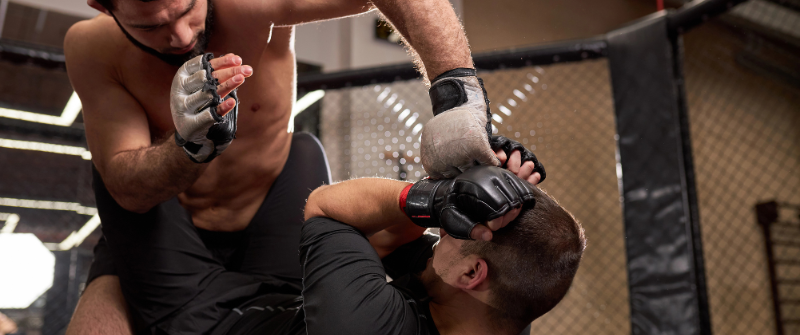
- by NEXO Team
- August 20, 2025
Martial arts insurance is designed to protect schools, instructors, and students from the risks that come with training. However, not every policy automatically covers activities like training or sparring, which carry a higher chance of injury. These practices are fundamental to many martial arts disciplines, yet they could end up falling into coverage gaps if they’re not specifically outlined in your policy.
Knowing what’s included (and what’s not) helps prevent expensive surprises and keeps your business protected as students advance into more complex training scenarios.
What Does Martial Arts Insurance Typically Cover?
Martial arts insurance typically covers the day-to-day activities that happen in a training facility, including general classes, group sessions, and private lessons where students are learning techniques under controlled conditions. The policy is designed to protect against common risks, such as accidental injuries that may occur during regular training. Both students and instructors are covered, providing financial protection if someone gets hurt during a class.
In addition to injury coverage, martial arts insurance often includes liability protection for accidents that happen on the premises. If a student trips over equipment or a parent slips while watching a class, for example, the policy helps cover legal and medical expenses. Some plans also extend to off-site events, like demonstrations or tournaments, but only if these activities are specified in the coverage. This foundational layer of protection gives schools and instructors a safety net for the most routine aspects of running a martial arts gym.
Training and Sparring: The Special Considerations
Training introduces a different set of risks compared to traditional martial arts classes. Instead of practicing empty-hand techniques, students are now working with staffs, swords, or other apparatuses that require additional safety protocols. Even in a controlled environment, there’s a higher chance of accidental injuries due to the nature of the equipment and the precision that’s required to handle it correctly.
Sparring brings additional challenges, as it involves direct contact between participants. While protective gear and supervision reduce the risk, accidents like bruises, strains, or more serious injuries can still happen. Many standard martial arts insurance policies don’t automatically include coverage for these activities, or they may have limitations on how much protection they provide. Schools that incorporate training or regular sparring sessions often need to adjust their coverage to reflect these higher-risk scenarios. Adding the right endorsements helps maintain protection for both the business and its students.
Also Read: Common Insurance Claims in Martial Arts Studios and How to Prevent Them
Is Martial Arts Training Covered by Standard Policies?
Most standard martial arts insurance policies are designed to cover general instruction, and they focus on classes that involve unarmed techniques. Because of this, activities like training are often excluded or only partially covered. Policies may include specific wording that limits protection for sessions involving staff, swords, or other training. Without this coverage clearly outlined, a martial arts gym could be left exposed if an injury or accident happens during class..
This is why reading through the fine print of your policy is so important. Some insurers offer additional endorsements that extend coverage to training, but these usually aren’t included by default. If your school regularly incorporates it into its curriculum, it’s worth confirming that your insurance reflects those activities. Specialized coverage fills in the gaps and helps protect your business from the added risks that come with instruction, so it’s a necessary step in building a well-rounded insurance plan.
Does Sparring Fall Under Standard Coverage?
Sparring is a routine part of training for many martial arts styles, but not all insurance policies treat it the same way. Light sparring, for instance, is often used in disciplines like karate or taekwondo for skill development and is sometimes included in standard coverage. These sessions are typically non-contact or involve minimal contact, with strict rules and supervision to lower the risk of injury.
Full-contact sparring, on the other hand, introduces a higher level of risk. Styles like Muay Thai, boxing, or certain mixed martial arts programs may involve more intense sparring sessions that go beyond the scope of general coverage. In cases like these, insurance providers might require an addendum or a separate policy to cover the increased exposure. It’s important to clarify how your insurer defines sparring and at what level additional coverage becomes necessary. Doing this helps protect your school and provides peace of mind as students progress into more advanced training.
Types of Coverage You May Need for Training and Sparring
Schools that offer martial arts training often need liability insurance that directly covers injuries. Standard policies may not fully protect against incidents with swords, staffs, or other equipment, so gym owners should always review the fine print and ensure that these activities are covered. Programs that participate in demonstrations or competitions also require event coverage to handle accidents that happen outside of regular classes.
Sparring has its own set of considerations, especially when sessions involve moderate to full contact. Light sparring may be included under general liability. Still, more intense sparring often needs additional accident and injury coverage, as this helps with medical expenses and legal claims if someone gets hurt during practice. Matching your insurance coverage to the activities your martial arts gym offers builds a more reliable safety net, and it helps reduce the risk of coverage gaps that could leave your business exposed when unexpected accidents occur.
Also Read: How Much Does It Cost to Run a Martial Arts School?
How to Ensure Proper Coverage for Training and Sparring
When reviewing your martial arts insurance, you should start by thoroughly reading through the policy and focus on how it describes activities like training and sparring. Pay attention to the wording, especially if anything seems unclear or left out. If those activities aren’t specifically listed, reach out to your insurance provider and ask for more details. Make sure to clarify if training is included, what level of sparring is covered, and whether extra coverage is needed for events like tournaments or demonstrations.
Be upfront about everything your school offers. Classes, seminars, and special workshops should all be part of the conversation. The more your provider knows about your programs, the better they can shape the policy to fit your operations. Keeping the dialogue open helps prevent gaps that could create problems later on.
Conclusion
Every martial arts gym owner should be confident that their insurance fully covers training and sparring. Take a moment to look over your current policy and make sure it reflects the activities you offer, and if you’re unsure what’s included, NEXO is here to help. We manage your insurance with tailored plans designed for martial arts gyms, so you can spend less time on paperwork and more time building your business. Contact us today to get started.
Categories
Fill out a short form to contact us with your questions or to receive a customized quote.
Recent Posts
-
 NEXO’s Affinity Program: How Fitness Suppliers and Associations Can Partner for Profit and Protection
December 5, 2025
NEXO’s Affinity Program: How Fitness Suppliers and Associations Can Partner for Profit and Protection
December 5, 2025 -
%20(1).png) How to Insure an MMA Gym Without Paying for Coverage You Don’t Need
December 5, 2025
How to Insure an MMA Gym Without Paying for Coverage You Don’t Need
December 5, 2025 -
 Mastering Liability for Jiu-Jitsu Tournaments and Martial Arts Events
December 5, 2025
Mastering Liability for Jiu-Jitsu Tournaments and Martial Arts Events
December 5, 2025 -
 From Zen to Zoning: What Every Yoga and Pilates Studio Owner Should Know Before Signing a Lease
December 5, 2025
From Zen to Zoning: What Every Yoga and Pilates Studio Owner Should Know Before Signing a Lease
December 5, 2025 -
%20(1).png) Why Your Referral & Loyalty Program Can Impact Your Insurance Rates
December 5, 2025
Why Your Referral & Loyalty Program Can Impact Your Insurance Rates
December 5, 2025
